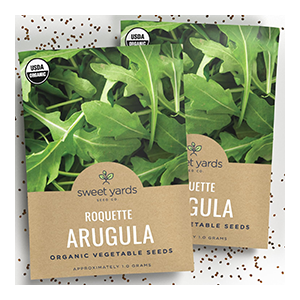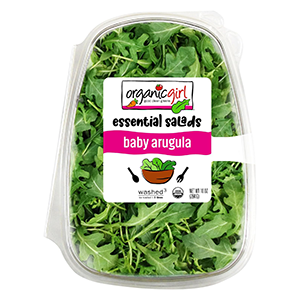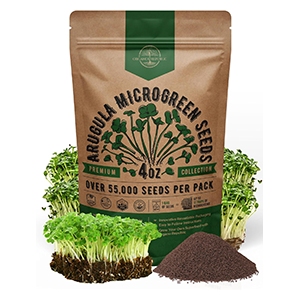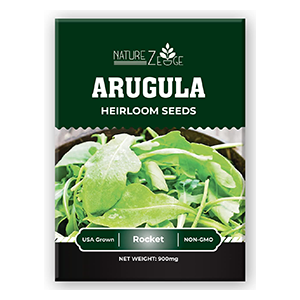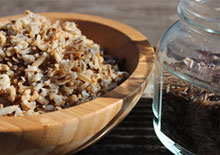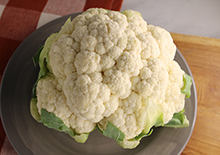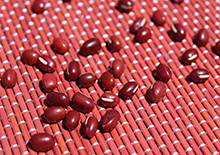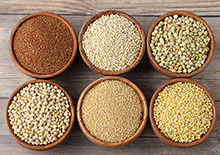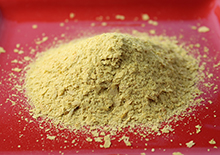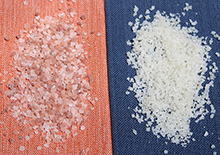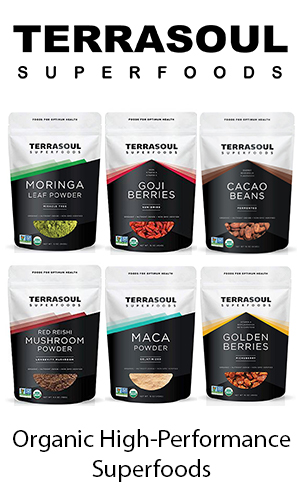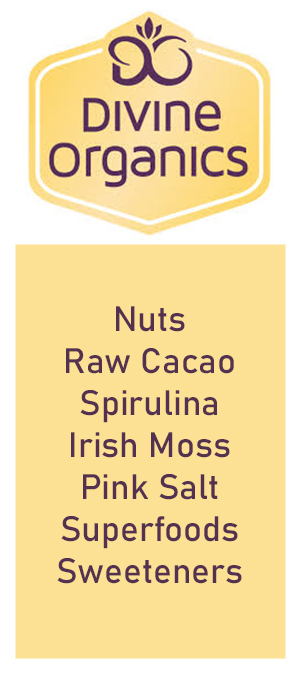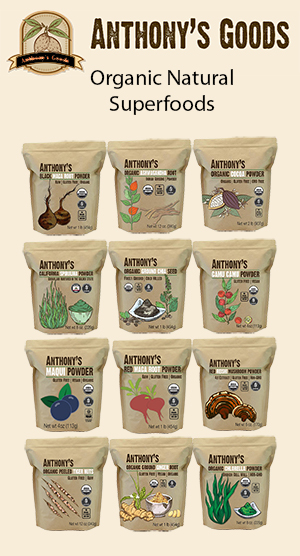- Home
- Plant-Based Cooking
- Things About Arugula Greens
8 Things About Arugula Greens, Rocket Lettuce Nutrition
What is Arugula? | Low in Oxalates | Contains Erucin | Nutritional Benefits | Keto Food | Aids Detox | How to Use | Growing Arugula | Precautions | Shop
1) What is Arugula?

Arugula (Eruca sativa) is a type of leafy green indigenous to Mediterranean climates. Various regions of Italy and the Middle East have been consuming it for many centuries.
Also called "rocket" or "rocket lettuce", arugula is most well-known for its distinct nutty peppery flavor that provides a popular addition to most any salad.
Table of Contents
What is Arugula? | Low in Oxalates | Contains Erucin | Nutritional Benefits | Keto Food | Aids Detox | How to Use | Growing Arugula | Precautions | Shop
In the past, larger leaved arugula was sold by the bunch next to kale, cilantro, parsley and collard, but today (at least here in the U.S.) it is frequently found as a type of "baby green" or "microgreen".
These types have much smaller leaves which can be added by the handful to spice up meals or salads. Another hardy variation we enjoy also includes baby "wild red" leaf arugula.
Similar to dandelion greens, radicchio, or tatsoi, all arugula can be served raw or slightly steamed with hot dishes.
Cooking will mellow and sweeten the taste profile compared to the fresh raw leaves.
2) Arugula is a Low Oxalate Leafy Green
Being a member of the Brassica family, it is a cruciferous vegetable. Like many "crucifers" such as broccoli, kale, mustard and cabbage, the flowers have a cross-like shape.
All cruciferous greens and vegetables are typically known for their very low oxalate content making them suitable for someone on a low oxalate diet.
This gives arugula the advantage over other high-oxalate greens, like spinach, Swiss chard and parsley, which can potentially bind to minerals like calcium and contribute to stone formation.
Excessive oxalate intake for some individuals can likewise exacerbate many digestive, autoimmune and other inflammatory conditions.
Arugula can therefore be a safer choice for those concerned about these oxalate-sensitive health issues.
We discuss this more on our "Foods High in Oxalates, What You Need to Know" page.
Now let's get into the main nutritional benefits of arugula as a functional food.
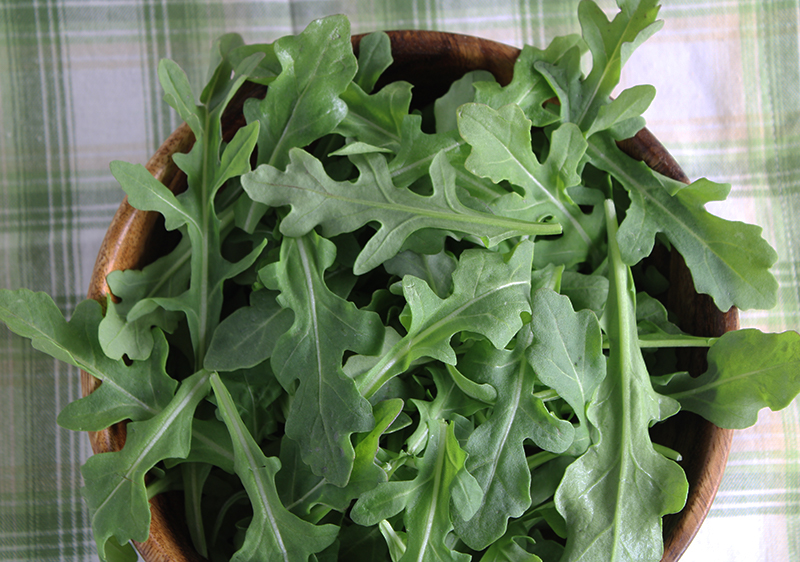
3) Arugula Contains the Isothiocyanate Erucin
The Eruca sativa arugula leaf species not only contain SULFORAPHANE but also large quantities of the compound known as ERUCIN.
Erucin is a dietary isothiocyanate with similarities to sulforaphane. Both are sulfur-containing constituents that give the leaves their distinct taste and fragrance.
Erucin is reported to have anti-inflammatory and antioxidant activity, helpful for neutralizing free radicals and harmful carcinogens.

4) Other Nutritional Benefits of Arugula
Generally, it's beneficial to mix up your dietary intake of leafy greens and arugula is definitely one to include on the list next to others like romaine, collard, cilantro, cabbage, red leaf lettuce and kale.
Nutritional profiles can vary depending on the source quality and we always recommended opting for organic, non-GMO or home-grown varieties over conventional choices.
Arugula is considered a nutrient-dense leafy green because of its wide array of vitamins and minerals that support healthy eyes, skin and bones.
According to nutrition data, it is especially high in VITAMIN K and FOLATE as well as contains small amounts of vitamin C and the carotenoids beta-carotene, lutein and zeaxanthin.
One Cup of Raw Arugula
vitamin K - 21.7 mcg, 18% DV
folate - 19.40 mcg, 5% DV
vitamin C - 3.0 mg, 3% DV
beta-carotene - 284.80 mcg
lutein + zeaxanthin - 711.00 mcg
calcium - 32.00 mg, 2%
copper - 0.02 mg, 2%
iron - 0.29 mg, 2%
magnesium - 9.40 mg, 2%
potassium - 73.80 mg, 2%
In regard to mineral content, one cup of raw arugula is shown to comprise about 2% the Daily Value for calcium, copper, iron, magnesium and potassium, based on an adult daily 2000-calorie diet.
5) Arugula is a Keto Food
Arugula is a good low oxalate leafy green to include on a ketogenic diet plan. As a fibrous alkaline food source that's low in carbs, it makes a nutritious keto-friendly addition to a meal.
Integrating rocket lettuce, not only provides a peppery flavor but may also help support common issues associated with keto diets such as digestive disorders and maintaining proper electrolyte balance.
In addition, this next big advantage can also assist those following ketogenic regimens.
6) Aids Detox Processes
Since we are all routinely exposed to many environmental pollutants in the world around us, it can be useful to counteract them with known dietary cleansers.
Cruciferous leafy greens, and their beneficial compounds, are believed to be supportive to the body's natural detoxification processes. For example, both sulforaphane and erucin are reported to induce Phase II detoxification enzymes, like GLUTATHIONE, which can help to make toxins more water-soluble and easier to excrete.
In the same manner, eating bitter-sweet greens like dandelion and arugula can encourage digestive juices and influence optimal liver function.
Arugula with its high ORGANOSULFUR and NITRATE content may also improve cholesterol balance and benefit cardiovascular health.
7) How to Use Arugula
Arugula, known for its strong nutty and mildly spicy bitter-sweet flavor, is frequently used as a salad ingredient mixed with other more neutral-tasting greens and often paired with cheeses like feta.
It is also typically eaten as a side dish with meals in Mediterranean cultures, used to make arugula pesto or as a pizza topping.
Arugula is also sometimes steamed or sautéed, like spinach, and enjoyed as a cooked leafy green or integrated into pasta, soups or other entrees like the Italian dish called Cavatiéddi.
Because arugula is a bit of a delicate leafy that can turn yellow very quickly, it is important to keep it refrigerated in a well-sealed bag or the container it usually comes in.
8) Growing Your Own Arugula
One of the best ways to enjoy arugula is to grow it as a spring garden vegetable. Freshly harvested leaves add an extra special boost to a homemade salad and most likely will provide greater nutritional value than store-bought varieties.
As the season progresses, arugula leaves will become slightly more bitter but the white flowers can be eaten for their added peppery-sweet flavor.
Likewise, arugula grows very well indoors on sprouting trays as a microgreen variety.
Precautions:
Cruciferous vegetables, like arugula, when eaten in excess can potentially interfere with proper thyroid functioning, especially for those with hypothyroidism. Consult your health professional before adding arugula to the diet on a regular basis if you are pregnant, nursing, have a serious health condition or are taking any medications.
Shop Related Products (About Affiliates & Amazon Associate Paid Links)
Affiliate Disclaimer: This section contains affiliate product links. If you make a purchase through our recommended links, we receive a small commission at no additional cost to you. Thanks for the support.
